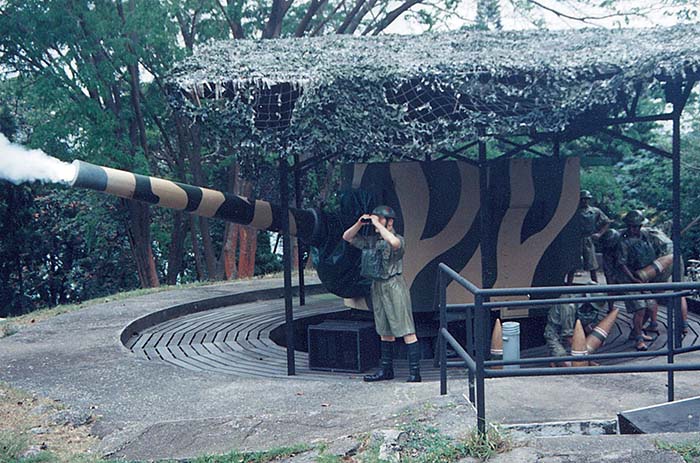Six Inch Gun “Firing.” This replicates one of two such guns used in the battle of Singapore in 1942. This exhibit is animated. When the visitor presses a button, the gun traverses, elevates and fires. The exhibit is complete with commands and shouts from the crew. Unlike the 12 pound gun, this gun used separate loading components. (Note projectiles and charges [cylinder between commander and projectiles] being prepared for firing.)
By Charles Q. Cutshaw
Although Singapore existed as a regional trading port since at least the 14th Century, it was not until Sir Stamford Raffles established a British enclave there in 1819 that Singapore took on worldwide importance as a trade center and strategic military component of Britain’s empire. Lying at the tip of the Malay Peninsula, Singapore dominates the passage from the Straits of Malacca into the Java and South China Seas. It is also centrally located with respect to other British colonies that were established at the time. The British recognized Singapore’s strategic importance early on and began fortifying the island against assault from the sea. The jungles of the Malay Peninsula were considered impassable and thus threats from the landward side of Singapore were considered extremely unlikely, a fact that ultimately led to the downfall of the British bastion in early 1942. But that is another story.
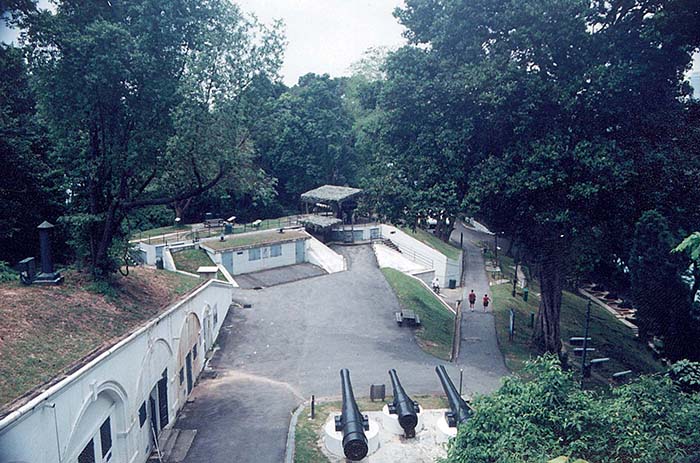
Fort Siloso is one of a series of fortresses that were constructed in the latter half of the 19th Century to defend what was then a key element in Britain’s Asian defense strategy. Sentosa Island, known as Blakang Mati until 1972, when it was turned into a recreational center for Singapore residents and foreign tourists, was the southernmost geographical feature of Singapore Island, dominating the approaches through the Singapore Strait and thus was heavily fortified. Indeed, Blakang Mati was essentially a military installation in its entirety until 1972. Fort Siloso formed an integral part of the mutually supporting, but individually independent, fortresses on the island. The other two, Forts Serapong and Fort Connaught on the eastern end of the island, were long ago buried by commercial development. There were also several artillery batteries located at key sites on Blakang Mati, but their guns were for the most part eventually incorporated into one of the three main fortresses and they were razed. The only battery that maintained its independence was Berhala Point Battery, but like the other forts and individual batteries, Berhala is now buried beneath commercial development.
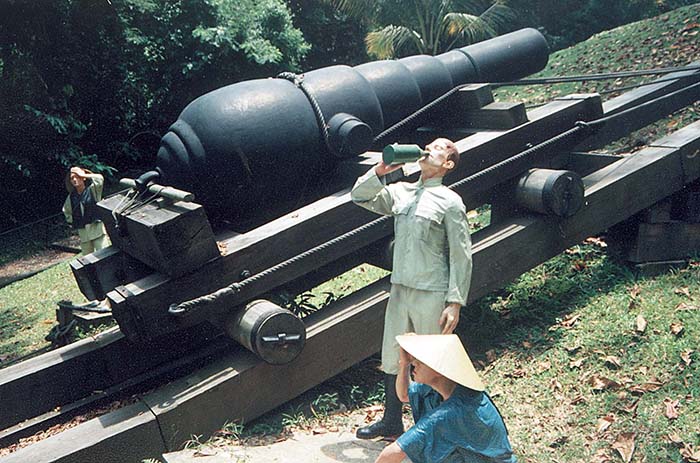
Although the British recognized the military importance of Blakang Mati from the beginning, it was not until 1879 that construction of fortifications got underway. It was then that the Royal Artillery began sending troops and weapons to the island to protect Keppel Harbor, Singapore’s lifeline through which all supplies had to pass. Fort Siloso itself was built by a work force of Royal Engineers and Chinese laborers in 1879 -1880. Huge quantities of gunpowder were used to blast away the top of Mount Siloso to create fields of fire for artillery so that engineers could build gun emplacements. At that time, Fort Siloso was merely one of Blakang Mati’s several artillery batteries, but later was expanded into a fortress complex that was intended to protect Singapore’s western approaches.
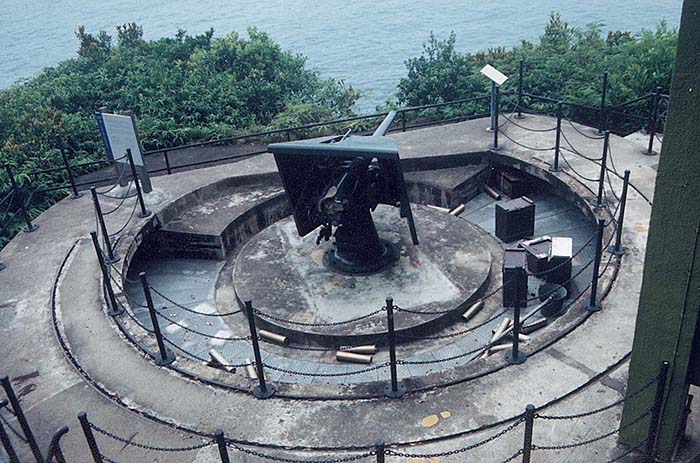
Duty for a soldier stationed at Fort Siloso was not too bad for the times. The worst enemy that he would have to face throughout most of Fort Siloso’s existence was boredom from the daily routine. Reveille was at 0600 and lights out at 2100. (That’s 6 AM and 9 PM to those of you who never served in the military.) Between those hours, life was generally predictable. Mornings were usually devoted to roll calls, administrative work, gun drills and parades. Some soldiers spent their afternoons in athletics, while others mended uniforms, repaired equipment, or prepared for inspection. In the evening, if they had the money, soldiers crossed over to the Singapore mainland for an evening on the town. (Some things never change!) The routine changed dramatically in December 1941, however, with the outbreak of war in the Pacific. Singapore was attacked from the air almost simultaneously with Pearl Harbor and was forced to surrender in February 1942 when the Japanese attacked the island from the landward side after having proceeded down the “impassable” Malay Peninsula. During the remainder of the war, Blakang Mati served as a prison camp for both military and civilian allied prisoners.
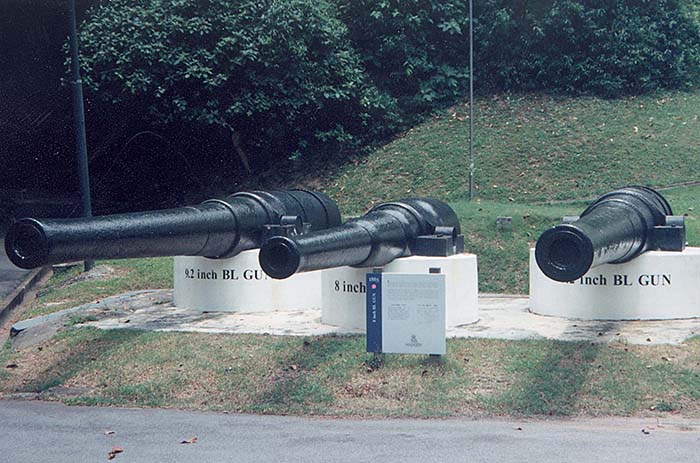
After the war, the island became home to a variety of military units with the Royal Artillery in overall command until 1958, when the British government ordered the coast artillery disbanded. A battalion of Gurkhas was stationed at Blakang Mati and its commander was placed in overall command when the Royal Artillery departed. The Gurkha commander remained in overall charge until Blakang Mati was handed over to the Singapore Military in 1967. Besides Royal Artillery coast artillery batteries and the Gurkhas, other Blakang Mati elements included a training center for locally recruited enlisted personnel and HMS Sultan, a naval processing center for sailors and marines in transit between Great Britain and Far Eastern assignments. When the commercial developers of Blakang Mati began their transformation of the island into what today is Sentosa Island, they decided to preserve Fort Siloso as an open air museum and monument to those who died in the defense of Singapore during World War II, and to those who served in Singapore’s defense forces. We must say that the developers of Fort Sentosa have achieved their goals. The fort preserves the atmosphere of a British colonial military installation, shows the life of the soldier at various times of the fort’s history, while at the same time blending in Singapore’s historic role. The fort itself has been meticulously restored with incredible attention to historic detail and is kept in pristine condition, a remarkable achievement given Singapore’s tropical climate. (Singapore is only 90 miles north of the equator.) The individual exhibits, virtually all of them in the open, are virtually lifelike and most have accompanying audio to enhance realism. One has to look twice to see if the human figures are posed or merely mannequins. There is a good representation of weaponry from all stages of Fort Siloso’s history, beginning with 17th Century Malayan cannon and ending with post World War II field artillery. There are only a few small arms, represented by the rifles carried by the “soldiers” on exhibit. There are many photographs, maps and pictures that represent life on Blakang Mati throughout its history. Rather than waste words trying to describe the outstanding exhibits, we will let the accompanying photographs speak for themselves.
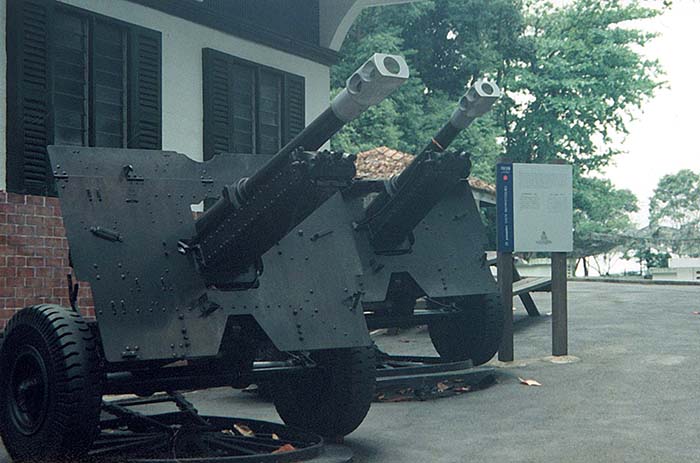
Our sole complaint is that the museum shop located at the Fort Siloso monorail station has nothing whatsoever of historic interest, being merely a shop for cold beverages and snacks. We found the curator’s office locked and there was no response when we knocked on the door, although it was mid morning. None of the attendants knew where the curator could be found and there was no indication as to how to contact him (her?).
All in all, if one visits Singapore and is a student of military history, Fort Siloso is a “must see.” It is without doubt the best preserved 19th Century fort that the author has ever seen. The historical accuracy and attention to detail in the exhibits are, again, remarkable. The visitor is given a clear impression of the life of Fort Siloso’s residents in times past. It is also clear that a great deal of money and effort went into restoring and preserving this historic jewel for the 21st Century visitor. Even the underground ammunition magazines are open to the public, kept clean and rubbish free and preserved as if they were to receive munitions the day following one’s visit.
To reach Fort Siloso from the Singapore Mainland, go to Sentosa Island. Hotels have information on how to get there. We took a taxi, which was very reasonable. (Taxis in Singapore are regulated and fare rates fixed.) We recommend the cable car to Sentosa, as the harbor view is spectacular! Once at the Sentosa Visitor Center, take the monorail to Station 3. The monorail makes a circuit of the island and runs on a regular schedule. One ticket is good for a day’s riding between island attractions. Admission to the fort is S$3.00 (about US$1.75) per person. Hours are from 9AM-7PM daily with last admissions at 6:30PM. We recommend allowing at least two hours at Fort Siloso to see and appreciate all the exhibits.
| This article first appeared in Small Arms Review V3N12 (September 2000) |



